Let’s talk about the spoilage and shelf life of tortillas.
Got a packet of tortillas that’s a week past the printed date, and not sure if they are still okay to eat?
Do tortillas even go bad? And how long do tortillas last, exactly?
If you have any questions about storage practices, shelf life, or spoilage of flour or corn tortillas, you’re in the right place. Let’s dive right in.
Everything below applies to both corn and flour tortillas, as the storage practices for both types are pretty much the same. There may be slight differences, but these aren’t important for a regular tortilla consumer (like me, and probably you).
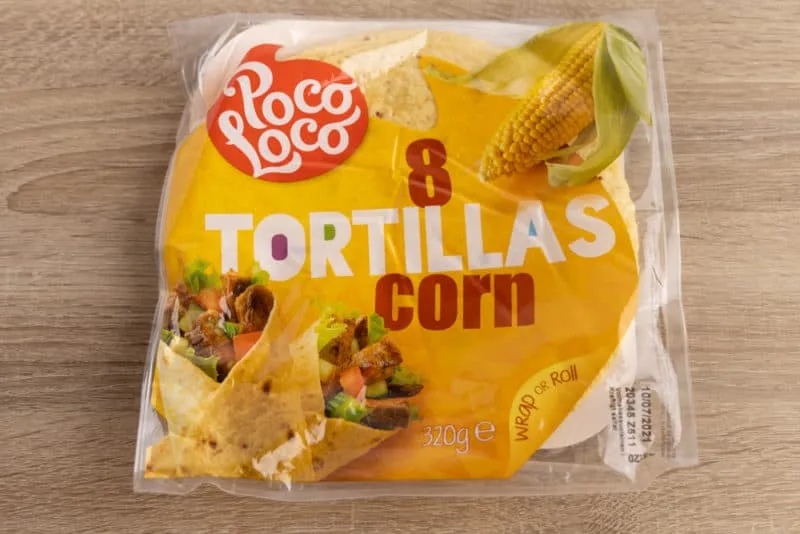
Table of Contents
- Do Tortillas Go Bad?
- How to Tell if Tortillas Are Bad?
- How Long Do Tortillas Last?
- How To Store Tortillas
- Can You Freeze Tortillas?
- Tortillas Shelf Life and Spoilage Summary
Do Tortillas Go Bad?
Tortillas don’t last forever. If you store them for too long or in poor conditions, they’ll go bad.
If they sit in storage for too long, they’ll become stiff and crumbly instead of pliable. And if you keep them at a warm temperature, they might grow mold if there’s too much moisture in the package.
Mold is much more common for homemade tortillas, which is why most recipes recommend storing them in the fridge if you’re not going to use them within a day or two.
Now, let’s talk about what to look for to know if your tortillas are okay to eat.
How to Tell if Tortillas Are Bad?
Throw out tortillas that:
- Are moldy or have any odd discolorations. If there’s any fuzzy action on the surface or there are any discolored (most likely green, black, or brown) spots, the wrap is gone.
- Smell off. If your nose says there’s something wrong with those tortillas, it’s most likely right. Please note tortillas might pick up odors from other foods in the fridge if you don’t seal them tightly.
- Are super stiff. Tortillas start out quite pliable but go stale over time. Of course, some stiffness is okay, and you can fix that by warming up the tortilla. But if applying heat doesn’t make the wrap pliable again, they’re likely useless.
Besides the above, pay attention to storage time and printed dates.

Can You Eat Expired Tortillas?
You can eat tortillas that have gone beyond the printed date as long as there aren’t any visual signs of spoilage such as mold, the flatbreads smell okay, and aren’t completely dry and stiff.
The date printed on the package isn’t an expiration date but usually a best-by or sell-by date. Which, roughly speaking, means the tortillas can retain decent quality beyond that date.
Some sellers even inform that if you store their wraps in the fridge, they can keep fresh for a month beyond that date.
It all depends on the brand you buy and how you store the tortillas, so it’s impossible to come up with a specific period.
But if the flatbreads are less than a month beyond their date, and you store them properly, don’t toss them before you assess the quality. They might still be quite alright.
How Long Do Tortillas Last?
| Room Temperature | Fridge | |
|---|---|---|
| Flour tortillas | Best-by + 1 week | Best-by + 1 month |
| Corn tortillas | Best-by + 1 week | Best-by + 1 month |
| Homemade tortillas | 1 day | 1 week |
Store-bought tortillas typically retain quality for about a week beyond the printed date if you store them at room temperature. If you refrigerate them, that period lengthens to between 2 weeks and a month, depending on the brand.
Opening the bag usually doesn’t affect storage time much, assuming that you squeeze out excess air and reseal the bag promptly. That means you can still store the flatbreads up until the printed date and a bit beyond.
There are exceptions to that, and that’s why you should always read the label for specifics. For instance, this seller recommends using their tortillas within a week of opening the package, and I’ve seen others say theirs only keep for three days after opening.
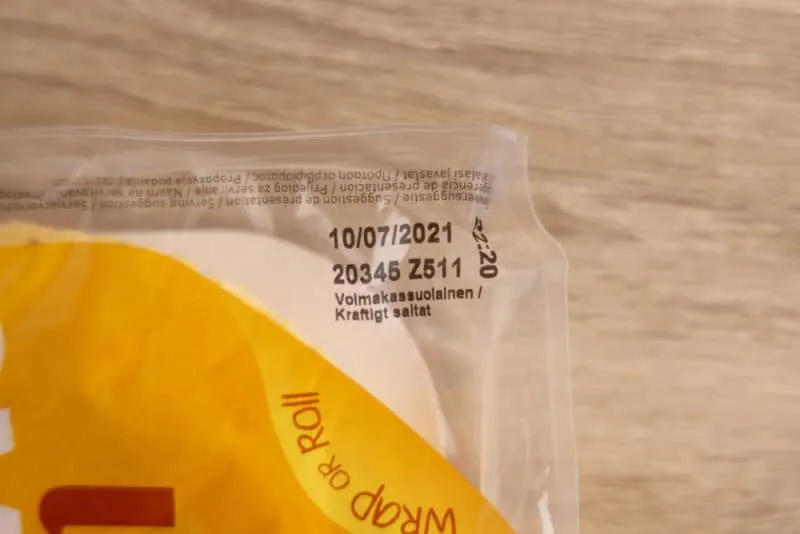
“Expiration” Date
Tortillas always come with a date on the label. That date is usually between a month and a couple months after packaging. And, as you can imagine, it’s not like the tortillas go bad a day or two after that date.
No matter if your label says “best-by,” “sell-by,” or “use-by” next to the date, it means the same for tortillas. That’s how long those tortillas should offer the best flavor and overall quality.
It’s not an expiration date by any means.
As I already mentioned, it’s impossible to determine how long past the printed date the tortillas will keep. It depends on the brand, storage conditions, and the like.
Because of that, I suggest going with a rough estimate of 1 week beyond the printed date if stored at room temperature and a month if refrigerated.
That said, if you know you might not use the tortillas before they “expire,” it’s best to freeze them instead. This way, you get a lot more time and don’t have to worry about the tortillas going stale.
Flour vs. Corn Tortillas
There aren’t any significant differences between corn and flour tortillas regarding shelf life. Corn tortillas might have a slightly longer overall shelf life than their flour counterparts, but that’s already reflected in the date printed on the package.
In other words, you don’t need to worry about it that much, and just stick to the periods I outlined earlier.
Next, let’s talk about homemade tortillas.

Homemade Tortillas
Homemade tortillas typically keep quality for a day on the counter or up to a week in the fridge. If you need more time, you can freeze them.
Those estimates are very conservative and should work for all sorts of flour and corn tortillas recipes.
Truth be told, if you look at tortilla recipes online, you’ll find that almost all use the same ingredients in similar proportions, but the storage suggestions are all over the place.
For instance, this recipe says you can leave the tortillas for a week at room temperature and two weeks in the fridge, while this one suggests up to 3 days on the counter.
Finally, one of the more popular homemade tortillas recipes recommends one day on the counter and one week in the fridge. And while these periods are the shortest I could find, I suggest following them because they’ll work for (pretty much) whatever recipe you’re using.
And if these seem short, you can always freeze the tortillas for a few months, which should solve any of your issues related to storage time.
Freezing is a great idea if you want to prolong the storage time of any flatbreads. Case in point: storing pita bread.
If you’re making non-plain tortillas (e.g., spinach tortillas), you probably should play it safe and store the wraps in the fridge for up to 4 days or freeze them. The same way you go about leftover pizza.
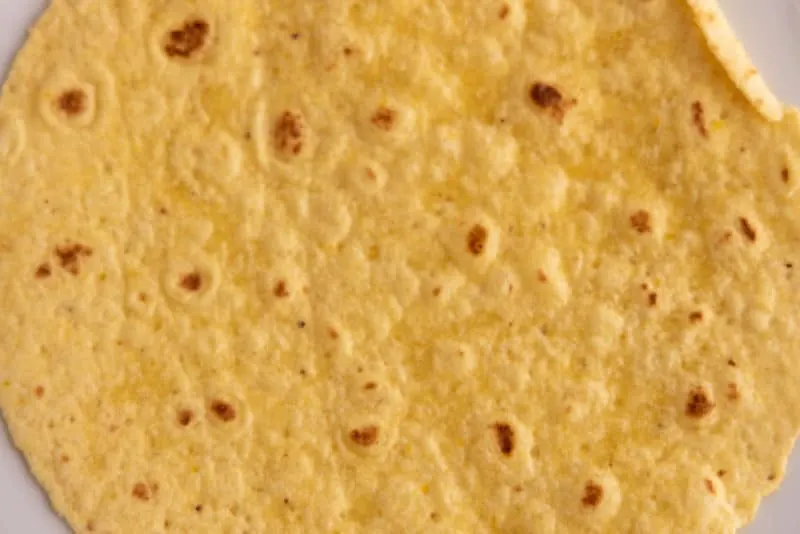
How To Store Tortillas
An unopened tortillas packet can sit at room temperature, in the fridge, or in the freezer.
Choose room temperature if you’re going to eat the wraps soon, the fridge if you need more time, or the freezer if you need them to last well beyond their date.
Once you open the package, refrigerate or freeze the leftovers for best results.
No matter where you store your tortillas, seal the leftovers tightly. This way, they don’t dry out too soon, and they don’t pick up any smells if you store them in the fridge.
Many packets are resealable, but if yours isn’t, go with a freezer bag or something similar. And remember to squeeze out any extra air before you seal the bag.
Room Temperature Storage
If you’re leaving your tortillas at ambient temperature, place them in a dry and dark spot away from moisture. A cupboard in the kitchen or pantry works perfectly for that purpose.
If you ever find your unrefrigerated tortillas moldy, that’s probably either because you stored them for too long or the temperature was too high and caused condensation. And as you know, water droplets on food products that aren’t refrigerated usually result in mold growth.
Try storing those tortillas in the fridge next time and see how it goes.
Finally, if you decide to leave leftover tortillas outside the fridge, use them within a week or so for best quality.
Refrigeration
You can refrigerate both unopened and open tortillas.
For an unopened packet, it makes sense to keep it in the fridge if you want the flatbreads to last a long time, possibly beyond the printed date, without losing quality. Otherwise, it’s usually okay to store tortillas at room temperature.
Once you open the package, refrigeration is way better if you need the wraps to last more than a couple of days. A tightly sealed bag of refrigerated tortillas retains quality much better than one chucked in a kitchen cupboard, especially in the summer.
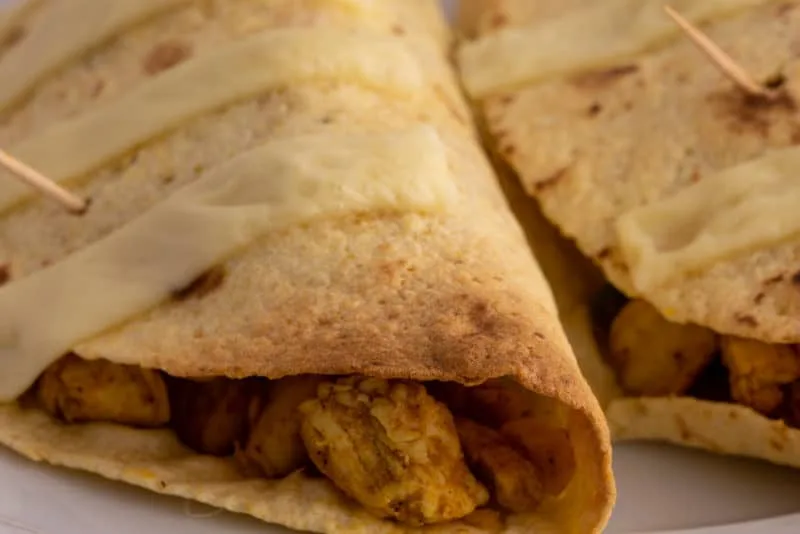
Do Tortillas Need to Be Refrigerated?
Unless your tortillas were in the refrigerated section in the store, you don’t need to refrigerate them. But if you need tortillas to last beyond the printed date or retain quality for a couple of weeks after opening the packet, storing them in the fridge is recommended.
In other words, it’s all about how long you’re going to store the flatbreads and how much you care about the quality. If you need them to last a long time without much quality loss, your fridge is definitely better than room temperature.
For homemade tortillas, it’s better to store them in the fridge if you’re not going to consume them the same day. They can often stay on the counter for a few days, but they always last longer if refrigerated.
Last but not least, if you don’t have much spare room in the fridge, there’s always the freezer. Let’s talk about that.
Can You Freeze Tortillas?
You can freeze tortillas, and they freeze remarkably well. So if you have a big bunch you’re not sure you’re going to use before they go bad, freezing is the best way to solve that problem.
Your tortillas, both homemade and store-bought, can sit in the freezer for at least 3+ months without any significant loss of quality.
The only issue with freezing corn or flour tortillas is that they freeze together. That means you have to do a bit of planning before you toss them into the freezer.
There are two ways to go about that.
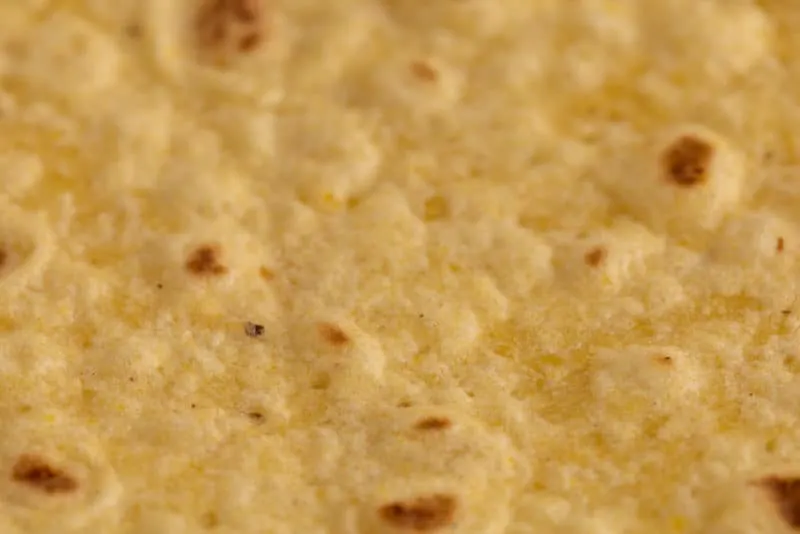
Freezing Tortillas In Groups
First, think about how many tortillas you need for a meal. Then put as many wraps into a freezer bag or container, and chuck them in the freezer.
If you’re going to use the whole packet for a single meal, you can toss it into the freezer without even opening it first.
When the time comes, you grab the bag, put it in the fridge overnight to defrost it, and use the thawed tortillas the next day.
Freezing Tortillas Separated By Wax or Parchment Paper
If you want to grab a tortilla or two (or six) easily, you need to separate them.
To do that, place a sheet of wax or parchment paper between each tortilla. Or place each one into a separate freezer bag if you have as many. Or pour and spread some cornmeal between each.
Once separated, you either wrap the bunch using plastic wrap or aluminum foil, or place it in a large freezer bag, and put it into the freezer.
Going with a freezer bag requires less hassle each time you need a tortilla because you don’t have to unwrap the whole thing just to grab a wrap or two.
When it comes to defrosting, your options are:
- leave the tortillas spread out on the counter for like 30 to 60 minutes (flip them after 20 minutes, so the bottom warms up as well)
- use a non-stick pan to defrost and reheat them in mere minutes
Choose whichever freezing option works best for your situation.

Tortillas Shelf Life and Spoilage Summary
Thanks for reading this primer on tortillas. Here are the takeaways:
- Tortillas don’t last forever. If stored for too long, they stiffen, and when stored in a warm or humid place, they can grow mold. Throw out tortillas that are moldy or have discolored spots, smell off, or are super stiff.
- Unopened tortillas keep for about a week beyond their date at room temperature and up to a month if you refrigerate them. After opening, they still last until the printed date and a bit beyond if they are stored properly. Caveat: read the label, as some sellers recommend using their tortillas within a couple of days of opening.
- You can leave leftover tortillas at room temperature if you’re going to eat them within a couple of days or refrigerate them if you need more time. Or you can freeze them for a couple of months.